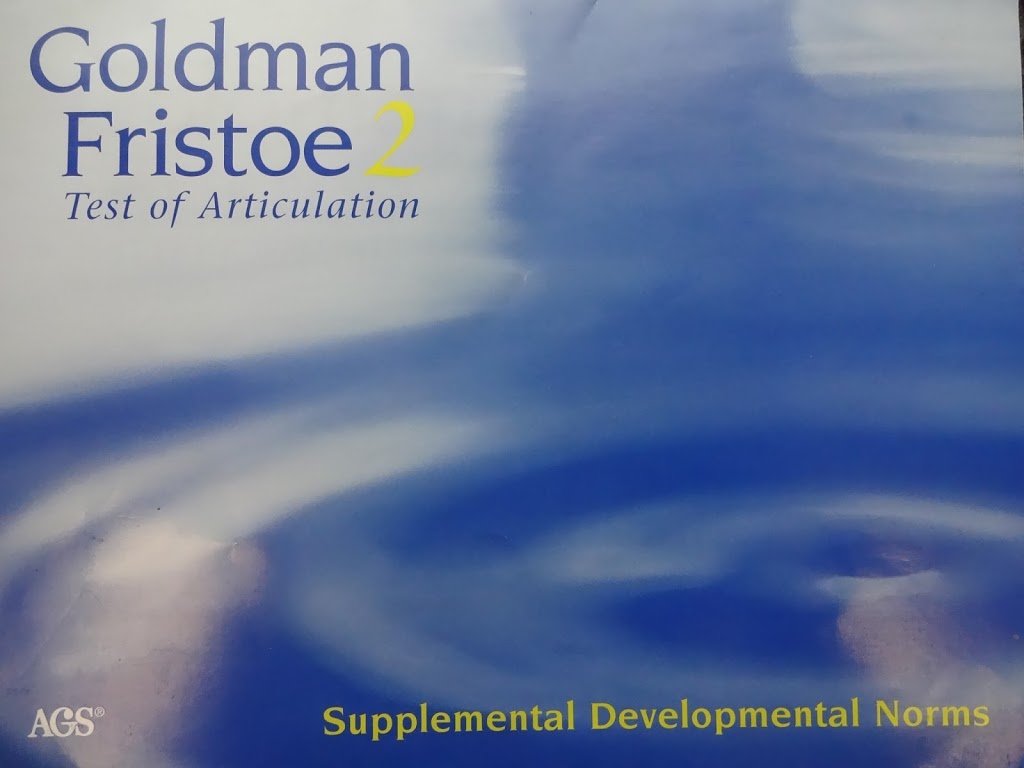A few months ago, I was reading the the Goldman Fristoe Test of Articulation-2 (GFTA-2) Administration manual. I know it sounds like a HUGE nerd alert, but it’s not like I brought it along on a beach vacation. It was to help me finalize new evaluation templates at my work.
I had always found the GFTA-2 to have confusing norms/percentiles. I might have a client with a standard score of 91 and a percentile of 9. In outpatient settings, a 9th percentile score might qualify for services whereas a 91 wouldn’t.
Anyhow as I was reviewing the manual, I found a statement that said, “The standard deviation cannot be interpreted in the same way as other measures. Articulation ability is not normally distributed in the population in the same way as are many other abilities such as intelligence or vocabulary knowledge which can be based on standard scores”
So what does that mean? It is explaining why the percentiles on the GFTA-2 are different than what you would see on a typical test. Another issue with using standard scores with an articulation test is that it doesn’t take into account the types of errors that were made. It’s possible to have a child that comes in who is able to make all of their later developing sounds but isn’t able to produce early developing sounds (p, b, m, t, d) or vowels (which aren’t assessed on the GFTA-2)
I have flexibility in an outpatient setting to look at the number/type of errors, look at the child’s intelligibility and compare them to developmental charts to make my decision about treatment. In the schools, we need to follow the state guidelines for getting children on caseloads.
There’s a slim blue book that comes with the GFTA-2 which I routinely ignored until I was reviewing the manual.
Supplemental Developmental Norms for ages 2-8 years of age. It contains p values for each sound in each position (initial, medial, final). And here’s the really cool thing. It compares the child’s performance to their same aged peers for each sound! The p values are a percentage of the correct response for each sound. No more guessing or pulling out developmental charts. I can tell a parent definitively that only 42% of 4 year olds produce the /r/ sound in the initial position. Or I can try to qualify a kid who is 7 who only has a /r/ errors by noting that 92% of his peers are able to produce the sound in the final position. I’m totally making up these particular numbers since I don’t have the norms book at my house!
About a year ago, I got a survey from Pearson r.e. a new GFTA assessment so I’m not sure how long it will be before they come out with it. But some of the questions on it made me pretty excited. Possible new features included:
- Vowel assessment
- Syllable assessments
- More /r/ probes
- More than one context for each sound



Great info! I too have ignored that little blue book, and I had no idea what I was missing out on!
I would love to see a phonological process screen in the new GFTA. I would also like scoring to be points based where non-developmental errors are given more weight than developmental errors.
I would love an artic test that doesn’t include dog, yellow, duck,squirrel, girl, etc—any stimulus word that will be in error due to assimilation.
I agree 100% with what Chris said (just above!) EVERY one of my Pre-K students get marked down for Yellow because they say Lello, yet they have the sound perfectly in other words (not tested).
Thanks for sharing this! I am also guilty of not looking at supplemental norms….
Oh this is awesome. I will admit, I haven’t taken a look at the slim blue book that came with the test! DUH! This is EXACTLY what I was needing the other day. I’m glad you read it 🙂